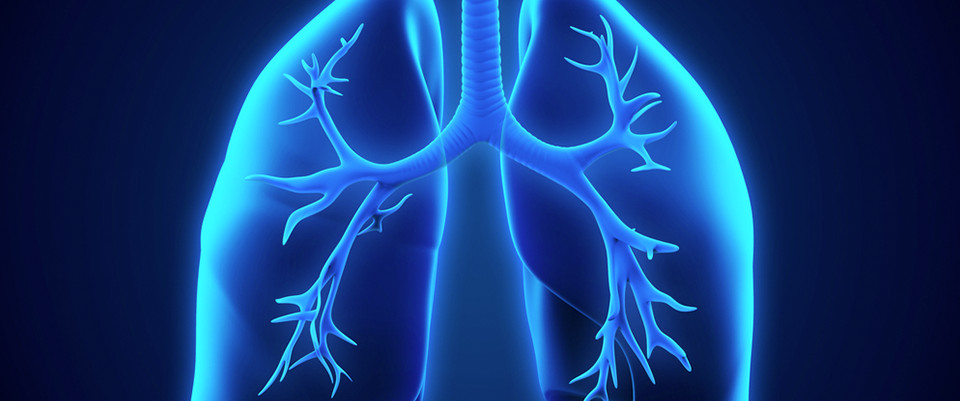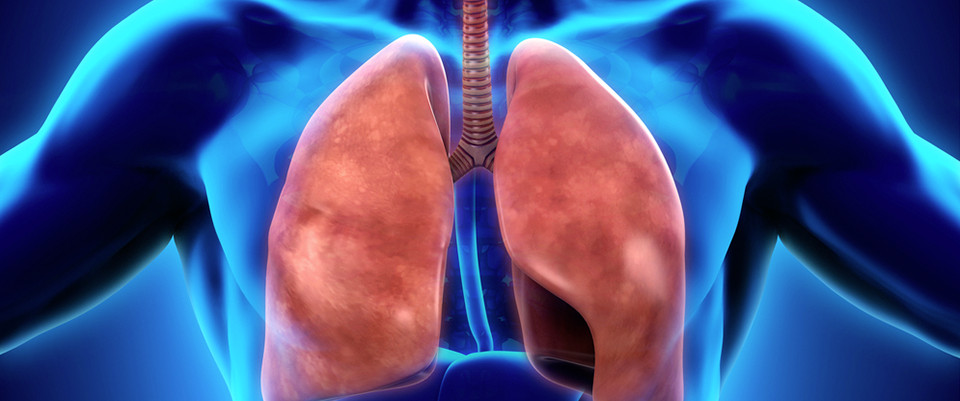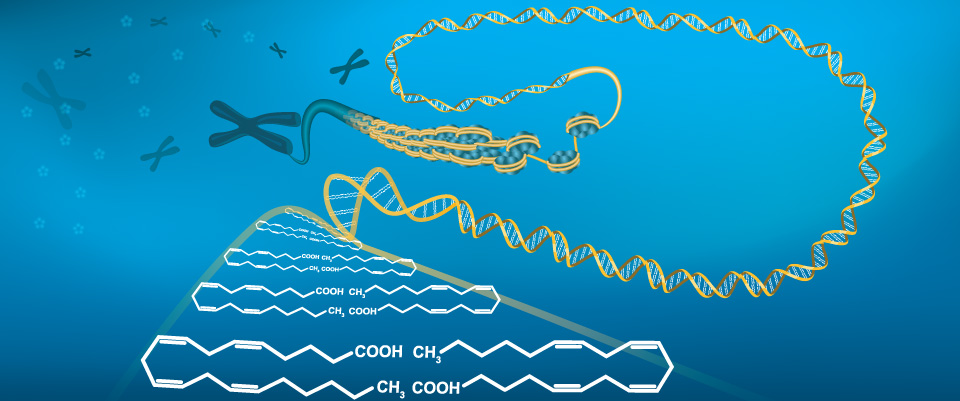PubMed
Mass spectrometry-based metabolomics and chemometric analysis of Pu-erh teas of various origins.
Related Articles
Mass spectrometry-based metabolomics and chemometric analysis of Pu-erh teas of various origins.
Food Chem. 2018 Dec 01;268:271-278
Authors: Wang T, Li X, Yang H, Wang F, Kong J, Qiu D, Li Z
Abstract
Pu-erh tea is one of the most popular tea beverages in China. Storage time, fermentation process and origin of production affect quality and price of Pu-erh teas. High resolution mass spectrometry-based metabolomics approach, NIR combined with chemometric analysis were used to profile water soluble metabolites from raw Bingdao Pu-erh teas stored for 1-10 years and teas from various production sites. Year prediction models with good rate of recognition were established using partial least squares analysis and factor analysis. 38 characteristic compounds were identified that can be used to distinguish length of storage of Pu-erh teas. 19 characteristic compounds were found that can be used to differentiate raw and ripened teas. Cluster analysis of Pu-erh teas from different sites showed correlation between geographical distribution of the sites and composition of the water extracts. The research provides guidance for discrimination of Pu-erh teas and helps establish a healthy tea market.
PMID: 30064758 [PubMed - in process]
Sarcopenia and myosteatosis are accompanied by distinct biological profiles in patients with pancreatic and periampullary adenocarcinomas.
Related Articles
Sarcopenia and myosteatosis are accompanied by distinct biological profiles in patients with pancreatic and periampullary adenocarcinomas.
PLoS One. 2018;13(5):e0196235
Authors: Stretch C, Aubin JM, Mickiewicz B, Leugner D, Al-Manasra T, Tobola E, Salazar S, Sutherland FR, Ball CG, Dixon E, Vogel HJ, Damaraju S, Baracos VE, Bathe OF
Abstract
INTRODUCTION: Pancreatic and periampullary adenocarcinomas are associated with abnormal body composition visible on CT scans, including low muscle mass (sarcopenia) and low muscle radiodensity due to fat infiltration in muscle (myosteatosis). The biological and clinical correlates to these features are poorly understood.
METHODS: Clinical characteristics and outcomes were studied in 123 patients who underwent pancreaticoduodenectomy for pancreatic or non-pancreatic periampullary adenocarcinoma and who had available preoperative CT scans. In a subgroup of patients with pancreatic cancer (n = 29), rectus abdominus muscle mRNA expression was determined by cDNA microarray and in another subgroup (n = 29) 1H-NMR spectroscopy and gas chromatography-mass spectrometry were used to characterize the serum metabolome.
RESULTS: Muscle mass and radiodensity were not significantly correlated. Distinct groups were identified: sarcopenia (40.7%), myosteatosis (25.2%), both (11.4%). Fat distribution differed in these groups; sarcopenia associated with lower subcutaneous adipose tissue (P<0.0001) and myosteatosis associated with greater visceral adipose tissue (P<0.0001). Sarcopenia, myosteatosis and their combined presence associated with shorter survival, Log Rank P = 0.005, P = 0.06, and P = 0.002, respectively. In muscle, transcriptomic analysis suggested increased inflammation and decreased growth in sarcopenia and disrupted oxidative phosphorylation and lipid accumulation in myosteatosis. In the circulating metabolome, metabolites consistent with muscle catabolism associated with sarcopenia. Metabolites consistent with disordered carbohydrate metabolism were identified in both sarcopenia and myosteatosis.
DISCUSSION: Muscle phenotypes differ clinically and biologically. Because these muscle phenotypes are linked to poor survival, it will be imperative to delineate their pathophysiologic mechanisms, including whether they are driven by variable tumor biology or host response.
PMID: 29723245 [PubMed - indexed for MEDLINE]
Metabolomic-Guided Isolation of Bioactive Natural Products from Curvularia sp., an Endophytic Fungus of Terminalia laxiflora.
Related Articles
Metabolomic-Guided Isolation of Bioactive Natural Products from Curvularia sp., an Endophytic Fungus of Terminalia laxiflora.
Planta Med. 2018 Feb;84(3):182-190
Authors: Tawfike AF, Abbott G, Young L, Edrada-Ebel R
Abstract
Endophytic fungi associated with medicinal plants are a potential source of novel chemistry and biology. Metabolomic tools were successfully employed to compare the metabolite fingerprints of solid and liquid culture extracts of endophyte Curvularia sp. isolated from the leaves of Terminalia laxiflora. Natural product databases were used to dereplicate metabolites in order to determine known compounds and the presence of new natural products. Multivariate analysis highlighted the putative metabolites responsible for the bioactivity of the fungal extract and its fractions on NF-κB and the myelogenous leukemia cell line K562. Metabolomic tools and dereplication studies using high-resolution electrospray ionization mass spectrometry directed the fractionation and isolation of the bioactive components from the fungal extracts. This resulted in the isolation of N-acetylphenylalanine (1: ) and two linear peptide congeners of 1: : dipeptide N-acetylphenylalanyl-L-phenylalanine (2: ) and tripeptide N-acetylphenylalanyl-L-phenylalanyl-L-leucine (3: ).
PMID: 28847019 [PubMed - indexed for MEDLINE]
A metabolomics research based on UHPLC-ESI-Q-TOF-MS coupled with metabolic pathway analysis: treatment effects of stir-frying Xanthii Fructus on allergic rhinitis in mice model.
Related Articles
A metabolomics research based on UHPLC-ESI-Q-TOF-MS coupled with metabolic pathway analysis: treatment effects of stir-frying Xanthii Fructus on allergic rhinitis in mice model.
Biomed Chromatogr. 2018 Jul 30;:e4352
Authors: Zhuang Y, Qin K, Yu B, Liu X, Cai B, Cai H
Abstract
Xanthii Fructus (XF), a well-known herb in traditional Chinese Medicine (TCM), has been frequently used for the treatment of allergic rhinitis in clinic, whose therapeutic metabolic mechanism, however, remained undetermined. In this work, a metabolomics research coupled with metabolic pathway analysis has been employed to screen out the potential mechanism in its effects of on allergic rhinitis effect. Specifically, the mice' serum samples from XF were analyzed based on ultra-high performance liquid chromatography equipped with electrospray ionization quadruple time-of-flight mass spectrometry detection (UHPLC-ESI-Q-TOF-MS) in both positive and negative polarity. In addition, the raw data gained from UHPLC-ESI-Q-TOF-MS were processed by principal component analysis (PCA) and partial least squares discriminant analysis (PLS-DA) in order to find out remarkable metabolites. Later, 27 potential biomarkers in mouse serum were filtered from free database like HMDB. Interestingly, this study filtered the potential metabolic pathways including Glycerophospholipid metabolism and Branch-chain amino acid (BCAAs) metabolism. We hope that this paper could provide a feasible strategy for revealing the therapeutic mechanism of XF in allergic rhinitis mice model.
PMID: 30062682 [PubMed - as supplied by publisher]
Molecular Epidemiology of Heart Failure: Translational Challenges and Opportunities.
Related Articles
Molecular Epidemiology of Heart Failure: Translational Challenges and Opportunities.
JACC Basic Transl Sci. 2017 Dec;2(6):757-769
Authors: Smith JG
Abstract
Heart failure (HF) is the end-stage of all heart disease and arguably constitutes the greatest unmet therapeutic need in cardiovascular medicine today. Classic epidemiological studies have established clinical risk factors for HF, but the cause remains poorly understood in many cases. Biochemical analyses of small case-control series and animal models have described a plethora of molecular characteristics of HF, but a single unifying pathogenic theory is lacking. Heart failure appears to result not only from cardiac overload or injury but also from a complex interplay among genetic, neurohormonal, metabolic, inflammatory, and other biochemical factors acting on the heart. Recent development of robust, high-throughput tools in molecular biology provides opportunity for deep molecular characterization of population-representative cohorts and HF cases (molecular epidemiology), including genome sequencing, profiling of myocardial gene expression and chromatin modifications, plasma composition of proteins and metabolites, and microbiomes. The integration of such detailed information holds promise for improving understanding of HF pathophysiology in humans, identification of therapeutic targets, and definition of disease subgroups beyond the current classification based on ejection fraction which may benefit from improved individual tailoring of therapy. Challenges include: 1) the need for large cohorts with deep, uniform phenotyping; 2) access to the relevant tissues, ideally with repeated sampling to capture dynamic processes; and 3) analytical issues related to integration and analysis of complex datasets. International research consortia have formed to address these challenges and combine datasets, and cohorts with up to 1 million participants are being collected. This paper describes the molecular epidemiology of HF and provides an overview of methods and tissue types and examples of published and ongoing efforts to systematically evaluate molecular determinants of HF in human populations.
PMID: 30062185 [PubMed]
Simultaneous untargeted and targeted metabolomics profiling of underivatized primary metabolites in sulfur-deficient barley by ultra-high performance liquid chromatography-quadrupole/time-of-flight mass spectrometry.
Related Articles
Simultaneous untargeted and targeted metabolomics profiling of underivatized primary metabolites in sulfur-deficient barley by ultra-high performance liquid chromatography-quadrupole/time-of-flight mass spectrometry.
Plant Methods. 2018;14:62
Authors: Ghosson H, Schwarzenberg A, Jamois F, Yvin JC
Abstract
Background: Metabolomics based on mass spectrometry analysis are increasingly applied in diverse scientific domains, notably agronomy and plant biology, in order to understand plants' behaviors under different stress conditions. In fact, these stress conditions are able to disrupt many biosynthetic pathways that include mainly primary metabolites. Profiling and quantifying primary metabolites remain a challenging task because they are poorly retained in reverse phase columns, due to their high polarity and acid-base properties. The aim of this work is to develop a simultaneous untargeted/targeted profiling of amino acids, organic acids, sulfur metabolites, and other several metabolites. This method will be applied on sulfur depleted barley, in order to study this type of stress, which is difficult to detect at early stage. Also, this method aims to explore the impact of this stress on barley's metabolome.
Results: Ultra-high performance liquid chromatography-high resolution mass spectrometry-based method was successfully applied to real samples allowing to discriminate, detect, and quantify primary metabolites in short-runs without any additional sampling step such as derivatization or ion pairing. The retention of polar metabolites was successfully achieved using modified C18 columns with high reproducibility (relative standard deviation below 10%). The quantification method showed a high sensitivity and robustness. Furthermore, high resolution mass spectrometry detection provided reliable quantification based on exact mass, eliminating potential interferences, and allowing the simultaneous untargeted metabolomics analysis. The untargeted data analysis was conducted using Progenesis QI software, performing alignment, peak picking, normalization and multivariate analysis. The simultaneous analysis provided cumulative information allowing to discriminate between two plant batches. Thus, discriminant biomarkers were identified and validated. Simultaneously, quantification confirmed coherently the relative abundance of these biomarkers.
Conclusions: A fast and innovated simultaneous untargeted/targeted method has successfully been developed and applied to sulfur deficiency on barley. This work opens interesting perspectives in both fundamental and applied research. Biomarker discovery give precious indication to understand plant behavior during a nutritional deficiency. Thus, direct or indirect measurement of these compounds allows a real time fertilization management and encounter the challenges of sustainable agriculture.
PMID: 30061918 [PubMed]
Histone methyltransferase Smyd1 regulates mitochondrial energetics in the heart.
Related Articles
Histone methyltransferase Smyd1 regulates mitochondrial energetics in the heart.
Proc Natl Acad Sci U S A. 2018 Jul 30;:
Authors: Warren JS, Tracy CM, Miller MR, Makaju A, Szulik MW, Oka SI, Yuzyuk TN, Cox JE, Kumar A, Lozier BK, Wang L, Llana JG, Sabry AD, Cawley KM, Barton DW, Han YH, Boudina S, Fiehn O, Tucker HO, Zaitsev AV, Franklin S
Abstract
Smyd1, a muscle-specific histone methyltransferase, has established roles in skeletal and cardiac muscle development, but its role in the adult heart remains poorly understood. Our prior work demonstrated that cardiac-specific deletion of Smyd1 in adult mice (Smyd1-KO) leads to hypertrophy and heart failure. Here we show that down-regulation of mitochondrial energetics is an early event in these Smyd1-KO mice preceding the onset of structural abnormalities. This early impairment of mitochondrial energetics in Smyd1-KO mice is associated with a significant reduction in gene and protein expression of PGC-1α, PPARα, and RXRα, the master regulators of cardiac energetics. The effect of Smyd1 on PGC-1α was recapitulated in primary cultured rat ventricular myocytes, in which acute siRNA-mediated silencing of Smyd1 resulted in a greater than twofold decrease in PGC-1α expression without affecting that of PPARα or RXRα. In addition, enrichment of histone H3 lysine 4 trimethylation (a mark of gene activation) at the PGC-1α locus was markedly reduced in Smyd1-KO mice, and Smyd1-induced transcriptional activation of PGC-1α was confirmed by luciferase reporter assays. Functional confirmation of Smyd1's involvement showed an increase in mitochondrial respiration capacity induced by overexpression of Smyd1, which was abolished by siRNA-mediated PGC-1α knockdown. Conversely, overexpression of PGC-1α rescued transcript expression and mitochondrial respiration caused by silencing Smyd1 in cardiomyocytes. These findings provide functional evidence for a role of Smyd1, or any member of the Smyd family, in regulating cardiac energetics in the adult heart, which is mediated, at least in part, via modulating PGC-1α.
PMID: 30061404 [PubMed - as supplied by publisher]
Metabolomics Biomarkers for Detection of Colorectal Neoplasms: A Systematic Review.
Related Articles
Metabolomics Biomarkers for Detection of Colorectal Neoplasms: A Systematic Review.
Cancers (Basel). 2018 Jul 27;10(8):
Authors: Erben V, Bhardwaj M, Schrotz-King P, Brenner H
Abstract
BACKGROUND: Several approaches have been suggested to be useful in the early detection of colorectal neoplasms. Since metabolites are closely related to the phenotype and are available from different human bio-fluids, metabolomics are candidates for non-invasive early detection of colorectal neoplasms.
OBJECTIVES: We aimed to summarize current knowledge on performance characteristics of metabolomics biomarkers that are potentially applicable in a screening setting for the early detection of colorectal neoplasms.
DESIGN: We conducted a systematic literature search in PubMed and Web of Science and searched for biomarkers for the early detection of colorectal neoplasms in easy-to-collect human bio-fluids. Information on study design and performance characteristics for diagnostic accuracy was extracted.
RESULTS: Finally, we included 41 studies in our analysis investigating biomarkers in different bio-fluids (blood, urine, and feces). Although single metabolites mostly had limited ability to distinguish people with and without colorectal neoplasms, promising results were reported for metabolite panels, especially amino acid panels in blood samples, as well as nucleosides in urine samples in several studies. However, validation of the results is limited.
CONCLUSIONS: Panels of metabolites consisting of amino acids in blood and nucleosides in urinary samples might be useful biomarkers for early detection of advanced colorectal neoplasms. However, to make metabolomic biomarkers clinically applicable, future research in larger studies and external validation of the results is required.
PMID: 30060469 [PubMed]
1H-NMR metabolomic profiling reveals a distinct metabolic recovery response in shoots and roots of temporarily drought-stressed sugar beets.
Related Articles
1H-NMR metabolomic profiling reveals a distinct metabolic recovery response in shoots and roots of temporarily drought-stressed sugar beets.
PLoS One. 2018;13(5):e0196102
Authors: Wedeking R, Maucourt M, Deborde C, Moing A, Gibon Y, Goldbach HE, Wimmer MA
Abstract
Yield formation in regions with intermittent drought periods depends on the plant's ability to recover after cessation of the stress. The present work assessed differences in metabolic recovery of leaves and roots of drought-stressed sugar beets with high temporal resolution. Plants were subjected to drought for 13 days, and rewatered for 12 days. At one to two-day intervals, plant material was harvested for untargeted 1H-NMR metabolomic profiling, targeted analyses of hexose-phosphates, starch, amino acids, nitrate and proteins, and physiological measurements including relative water content, osmotic potential, electrolyte leakage and malondialdehyde concentrations. Drought triggered changes in primary metabolism, especially increases in amino acids in both organs, but leaves and roots responded with different dynamics to rewatering. After a transient normalization of most metabolites within 8 days, a second accumulation of amino acids in leaves might indicate a stress imprint beneficial in upcoming drought events. Repair mechanisms seemed important during initial recovery and occurred at the expense of growth for at least 12 days. These results indicate that organ specific metabolic recovery responses might be related to distinct functions and concomitant disparate stress levels in above- and belowground organs. With respect to metabolism, recovery was not simply a reversal of the stress responses.
PMID: 29738573 [PubMed - indexed for MEDLINE]
Plasma metabolomic biomarkers accurately classify acute mild traumatic brain injury from controls.
Related Articles
Plasma metabolomic biomarkers accurately classify acute mild traumatic brain injury from controls.
PLoS One. 2018;13(4):e0195318
Authors: Fiandaca MS, Mapstone M, Mahmoodi A, Gross T, Macciardi F, Cheema AK, Merchant-Borna K, Bazarian J, Federoff HJ
Abstract
Past and recent attempts at devising objective biomarkers for traumatic brain injury (TBI) in both blood and cerebrospinal fluid have focused on abundance measures of time-dependent proteins. Similar independent determinants would be most welcome in diagnosing the most common form of TBI, mild TBI (mTBI), which remains difficult to define and confirm based solely on clinical criteria. There are currently no consensus diagnostic measures that objectively define individuals as having sustained an acute mTBI. Plasma metabolomic analyses have recently evolved to offer an alternative to proteomic analyses, offering an orthogonal diagnostic measure to what is currently available. The purpose of this study was to determine whether a developed set of metabolomic biomarkers is able to objectively classify college athletes sustaining mTBI from non-injured teammates, within 6 hours of trauma and whether such a biomarker panel could be effectively applied to an independent cohort of TBI and control subjects. A 6-metabolite panel was developed from biomarkers that had their identities confirmed using tandem mass spectrometry (MS/MS) in our Athlete cohort. These biomarkers were defined at ≤6 hours following mTBI and objectively classified mTBI athletes from teammate controls, and provided similar classification of these groups at the 2, 3, and 7 days post-mTBI. The same 6-metabolite panel, when applied to a separate, independent cohort provided statistically similar results despite major differences between the two cohorts. Our confirmed plasma biomarker panel objectively classifies acute mTBI cases from controls within 6 hours of injury in our two independent cohorts. While encouraged by our initial results, we expect future studies to expand on these initial observations.
PMID: 29677216 [PubMed - indexed for MEDLINE]
Productivity, Physicochemical Changes, and Antioxidant Activity of Shiitake Culinary-Medicinal Mushroom Lentinus edodes (Agaricomycetes) Cultivated on Lignocellulosic Residues.
Related Articles
Productivity, Physicochemical Changes, and Antioxidant Activity of Shiitake Culinary-Medicinal Mushroom Lentinus edodes (Agaricomycetes) Cultivated on Lignocellulosic Residues.
Int J Med Mushrooms. 2017;19(11):1041-1052
Authors: Gaitán-Hernández R, Zavaleta MAB, Aquino-Bolaños EN
Abstract
The effects of substrate and strain on productivity, physicochemical characteristics, and compounds with antioxidant activity were evaluated in basidiomes of the shiitake mushroom, Lentinus edodes. Strains IE-245 and IE-256 and the substrates oak wood shavings (OW), sorghum stubble (SS), and sugar cane bagasse (SC) were used. Productivity was evaluated by measuring biological efficiency (BE), production rate (PR), and yield. Total sugars, total soluble solids, pH, titratable acidity, color parameters, total phenolics, flavonoids, ascorbic acid, and antioxidant activity of the basidiomes were measured. BE, PR and yield were higher with the combination IE-256/SS, at 103.71%, 1.32%, and 34.57%, respectively. The largest amount of total sugars (17.61 mg glucose · g-1 dry weight) was found with combination IE-256/SS. Variation was observed in basidiome color; the lowest luminosity (L*) value (darkest color) was found in the IE-256 strain on the OW substrate (L* = 30.45), whereas that of the IE-245 strain on the SC substrate was the lightest in color (L* = 57.00). The largest amounts of total phenolics were recorded in the IE-256 strain on the OW (6.50 mg gallic acid equivalents [GAE] · g-1 dry weight) and the SS substrates (5.85 mg GAE · g-1 dry weight). The best antioxidant activity was obtained with IE-256-0.80, 0.65, and 0.59 μmol Trolox equivalents · g dry weight-1-on the OW, SC, and SS substrates, respectively. Based on the values of BE, PR, and yield, IE-256/SS was the most productive. Substrate and strain, and their interactions, influenced the physicochemical characteristics of the basidiomes and the amounts of compounds with antioxidant activity they contained.
PMID: 29345566 [PubMed - indexed for MEDLINE]
Unique metabolomic signature associated with hepatorenal dysfunction and mortality in cirrhosis.
Related Articles
Unique metabolomic signature associated with hepatorenal dysfunction and mortality in cirrhosis.
Transl Res. 2018 05;195:25-47
Authors: Mindikoglu AL, Opekun AR, Putluri N, Devaraj S, Sheikh-Hamad D, Vierling JM, Goss JA, Rana A, Sood GK, Jalal PK, Inker LA, Mohney RP, Tighiouart H, Christenson RH, Dowling TC, Weir MR, Seliger SL, Hutson WR, Howell CD, Raufman JP, Magder LS, Coarfa C
Abstract
The application of nontargeted metabolomic profiling has recently become a powerful noninvasive tool to discover new clinical biomarkers. This study aimed to identify metabolic pathways that could be exploited for prognostic and therapeutic purposes in hepatorenal dysfunction in cirrhosis. One hundred three subjects with cirrhosis had glomerular filtration rate (GFR) measured using iothalamate plasma clearance, and were followed until death, transplantation, or the last encounter. Concomitantly, plasma metabolomic profiling was performed using ultrahigh performance liquid chromatography-tandem mass spectrometry to identify preliminary metabolomic biomarker candidates. Among the 1028 metabolites identified, 34 were significantly increased in subjects with high liver and kidney disease severity compared with those with low liver and kidney disease severity. The highest average fold-change (2.39) was for 4-acetamidobutanoate. Metabolite-based enriched pathways were significantly associated with the identified metabolomic signature (P values ranged from 2.07E-06 to 0.02919). Ascorbate and aldarate metabolism, methylation, and glucuronidation were among the most significant protein-based enriched pathways associated with this metabolomic signature (P values ranged from 1.09E-18 to 7.61E-05). Erythronate had the highest association with measured GFR (R-square = 0.571, P <0.0001). Erythronate (R = 0.594, P <0.0001) and N6-carbamoylthreonyladenosine (R = 0.591, P <0.0001) showed stronger associations with measured GFR compared with creatinine (R = 0.588, P <0.0001) even after controlling for age, gender, and race. The 5 most significant metabolites that predicted mortality independent of kidney disease and demographics were S-adenosylhomocysteine (P = 0.0003), glucuronate (P = 0.0006), trans-aconitate (P = 0.0018), 3-ureidopropionate (P = 0.0021), and 3-(4-hydroxyphenyl)lactate (P = 0.0047). A unique metabolomic signature associated with hepatorenal dysfunction in cirrhosis was identified for further investigations that provide potentially important mechanistic insights into cirrhosis-altered metabolism.
PMID: 29291380 [PubMed - indexed for MEDLINE]
metabolomics; +21 new citations
21 new pubmed citations were retrieved for your search.
Click on the search hyperlink below to display the complete search results:
metabolomics
These pubmed results were generated on 2018/07/31PubMed comprises more than millions of citations for biomedical literature from MEDLINE, life science journals, and online books.
Citations may include links to full-text content from PubMed Central and publisher web sites.
metabolomics; +21 new citations
21 new pubmed citations were retrieved for your search.
Click on the search hyperlink below to display the complete search results:
metabolomics
These pubmed results were generated on 2018/07/31PubMed comprises more than millions of citations for biomedical literature from MEDLINE, life science journals, and online books.
Citations may include links to full-text content from PubMed Central and publisher web sites.
Metabolite changes behind faster growth and less reproduction of Daphnia similis exposed to low-dose silver nanoparticles.
Metabolite changes behind faster growth and less reproduction of Daphnia similis exposed to low-dose silver nanoparticles.
Ecotoxicol Environ Saf. 2018 Jul 26;163:266-273
Authors: Wang P, Ng QX, Zhang H, Zhang B, Ong CN, He Y
Abstract
With increasing presence of silver nanoparticles (AgNPs) into the environment, the chronic and low-dose effects of AgNPs are of vital concern. This study evaluated chronic physiological effects of AgNPs on Daphnia similis, which were exposed to two ambient encountered concentrations (0.02 and 1 ppb) of AgNPs for 21 days. It was observed that the low-dose AgNPs stimulated a significant increase in average length/dry mass, but inhibited reproduction compared to control specimens. Non-targeted metabolomics based on liquid chromatography-quadrupole-time of flight-mass spectrometry (LC-QTOFMS-MS) and gas chromatograph-quadrupole time of flight mass spectrometry (GC-QTOF-MS) were utilized to elucidate the underlying molecular mechanisms of these responses. Forty one metabolites were identified, including 18 significantly-changed metabolites, suggesting up regulation in protein digestion and absorption (amino acids, such as isoleucine, tryptophan, lysine, leucine, valine, aspartic acid, threonine, tyrosine) and down regulation of lipid related metabolism (fatty acids, such as arachidonic acid, stearidonic acid, linoelaidic acid and eicosapentaenoic acid) were key events in these responses. The increase in these amino acid contents explains the accelerated growth of D. similis from the metabolic pathway of aminoacyl-tRNA biosynthesis. Down regulation of fatty acid contents corresponds to the observed drop in the reproduction rate considering the fatty acid biological enzymatic reaction pathways. Significant changes in metabolites provided a renewed mechanistic understanding of low concentration chronic toxicity of AgNP toxicity on D. similis.
PMID: 30056340 [PubMed - as supplied by publisher]
Metabolic profiling of the anti-tumor drug regorafenib in mice.
Metabolic profiling of the anti-tumor drug regorafenib in mice.
J Pharm Biomed Anal. 2018 Jul 20;159:524-535
Authors: Wang YK, Xiao XR, Xu KP, Li F
Abstract
Regorafenib is a novel tyrosine kinase inhibitor, which has been approved by the United States Food and Drug Administration for the treatment of various tumors. The purpose of the present study was to describe the metabolic map of regorafenib, and investigate its effect on liver function. Mass spectrometry-based metabolomics approach integrated with multiple mass defect filter was used to determine the metabolites of regorafenib in vitro incubation mixtures (human liver microsomes and mouse liver microsomes), serum, urine and feces samples from mice treated with 80 mg/kg regorafenib. Eleven metabolites including four novel metabolites were identified in the present investigation. As halogen substituted drug, reductive defluorination and oxidative dechlorination metabolites of regorafenib were firstly report in present study. By screening using recombinant cytochrome P450 s (CYPs), CYP3A4 was found to be the principal isoforms involved in regorafenib metabolism. The predication with a molecular docking model confirmed that regorafenib had potential to interact with the active sites of CYP3A4, CYP3A5 and CYP2D6. Serum chemistry analysis revealed no evidence of hepatic damage from regorafenib exposure. This study provided a global view of regorafenib metabolism and its potential side-effects.
PMID: 30055476 [PubMed - as supplied by publisher]
Impact of tart cherries polyphenols on the human gut microbiota and phenolic metabolites in vitro and in vivo.
Impact of tart cherries polyphenols on the human gut microbiota and phenolic metabolites in vitro and in vivo.
J Nutr Biochem. 2018 Apr 07;59:160-172
Authors: Mayta-Apaza AC, Pottgen E, De Bodt J, Papp N, Marasini D, Howard L, Abranko L, Van de Wiele T, Lee SO, Carbonero F
Abstract
Tart cherries have been reported to exert potential health benefits attributed to their specific and abundant polyphenol content. However, there is a need to study the impact and fate of tart cherries polyphenols in the gut microbiota. Here, tart cherries, pure polyphenols (and apricots) were submitted to in vitro bacterial fermentation assays and assessed through 16S rRNA gene sequence sequencing and metabolomics. A short-term (5 days, 8 oz. daily) human dietary intervention study was also conducted for microbiota analyses. Tart cherry concentrate juices were found to contain expected abundances of anthocyanins (cyanidin-glycosylrutinoside) and flavonoids (quercetin-rutinoside) and high amounts of chlorogenic and neochlorogenic acids. Targeted metabolomics confirmed that gut microbes were able to degrade those polyphenols mainly to 4-hydroxyphenylpropionic acids and to lower amounts of epicatechin and 4-hydroxybenzoic acids. Tart cherries were found to induce a large increase of Bacteroides in vitro, likely due to the input of polysaccharides, but prebiotic effect was also suggested by Bifidobacterium increase from chlorogenic acid. In the human study, two distinct and inverse responses to tart cherry consumption were associated with initial levels of Bacteroides. High-Bacteroides individuals responded with a decrease in Bacteroides and Bifidobacterium, and an increase of Lachnospiraceae, Ruminococcus and Collinsella. Low-Bacteroides individuals responded with an increase in Bacteroides or Prevotella and Bifidobacterium, and a decrease of Lachnospiraceae, Ruminococcus and Collinsella. These data confirm that gut microbiota metabolism, in particular the potential existence of different metabotypes, needs to be considered in studies attempting to link tart cherries consumption and health.
PMID: 30055451 [PubMed - as supplied by publisher]
Integrating -Omics Approaches into Human Population-Based Studies of Prenatal and Early-Life Exposures.
Related Articles
Integrating -Omics Approaches into Human Population-Based Studies of Prenatal and Early-Life Exposures.
Curr Environ Health Rep. 2018 Jul 27;:
Authors: Everson TM, Marsit CJ
Abstract
PURPOSE OF REVIEW: We present the study design and methodological suggestions for population-based studies that integrate molecular -omics data and highlight recent studies that have used such data to examine the potential impacts of prenatal environmental exposures on fetal health.
RECENT FINDINGS: Epidemiologic studies have observed numerous relationships between prenatal exposures (smoking, toxic metals, endocrine disruptors) and fetal and early-life molecular profiles, though such investigations have so far been dominated by epigenomic association studies. However, recent transcriptomic, proteomic, and metabolomic studies have demonstrated their promise for the identification of exposure and response biomarkers. Molecular -omics have opened new avenues of research in environmental health that can improve our understanding of disease etiology and contribute to the development of exposure and response biomarkers. Studies that incorporate multiple -omics data from different molecular domains in longitudinally collected samples hold particular promise.
PMID: 30054820 [PubMed - as supplied by publisher]
Comprehensive organic profiling of biological particles derived from blood.
Related Articles
Comprehensive organic profiling of biological particles derived from blood.
Sci Rep. 2018 Jul 27;8(1):11310
Authors: Wu CY, Martel J, Young JD
Abstract
Mineral nanoparticles form in physiological and pathological processes occurring in the human body. The calcium phosphate mineral phase of the particles has affinity for proteins and lipids, but the complete profiling of the organic molecules that bind to the particles has not been described in detail. We report here a comprehensive analysis of organic components found in mineralo-organic particles derived from body fluids. Based on biological staining, fluorescent tagging, proteomics and metabolomics, our results indicate that the mineral particles bind to proteins, amino acids, carbohydrates, polysaccharides, phospholipids, fatty acids, DNA and low molecular weight metabolites. These results can be used to study the formation and effects of mineralo-organic particles in biological fluids.
PMID: 30054526 [PubMed - in process]
Complementary intestinal mucosa and microbiota responses to caloric restriction.
Related Articles
Complementary intestinal mucosa and microbiota responses to caloric restriction.
Sci Rep. 2018 Jul 27;8(1):11338
Authors: Duszka K, Ellero-Simatos S, Ow GS, Defernez M, Paramalingam E, Tett A, Ying S, König J, Narbad A, Kuznetsov VA, Guillou H, Wahli W
Abstract
The intestine is key for nutrient absorption and for interactions between the microbiota and its host. Therefore, the intestinal response to caloric restriction (CR) is thought to be more complex than that of any other organ. Submitting mice to 25% CR during 14 days induced a polarization of duodenum mucosa cell gene expression characterised by upregulation, and downregulation of the metabolic and immune/inflammatory pathways, respectively. The HNF, PPAR, STAT, and IRF families of transcription factors, particularly the Pparα and Isgf3 genes, were identified as potentially critical players in these processes. The impact of CR on metabolic genes in intestinal mucosa was mimicked by inhibition of the mTOR pathway. Furthermore, multiple duodenum and faecal metabolites were altered in CR mice. These changes were dependent on microbiota and their magnitude corresponded to microbial density. Further experiments using mice with depleted gut bacteria and CR-specific microbiota transfer showed that the gene expression polarization observed in the mucosa of CR mice is independent of the microbiota and its metabolites. The holistic interdisciplinary approach that we applied allowed us to characterize various regulatory aspects of the host and microbiota response to CR.
PMID: 30054525 [PubMed - in process]











